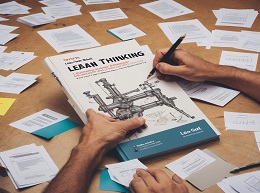Side Hustle: From Idea to Income in 27 Days

Unleash Your Potential: Review of "Side Hustle: From Idea to Income in 27 Days"
In "Side Hustle: From Idea to Income in 27 Days," Chris Guillebeau, the author of the popular book "The $100 Startup," provides a practical, step-by-step guide to help individuals turn their ideas into profitable side hustles in under a month. Guillebeau's approachable and motivational style, combined with actionable advice and real-world examples, makes this book an invaluable resource for anyone looking to diversify their income streams without quitting their day job. This review delves into the core principles of the book, highlights key lessons, and offers examples to illustrate Guillebeau's approach.
The Changing Economic Landscape
Guillebeau opens by discussing the evolving nature of work and the increasing need for multiple income streams. With job security becoming a thing of the past and the gig economy on the rise, having a side hustle has become more of a necessity than a luxury.
Example: Freelance Economy
Consider the rise of platforms like Upwork and Fiverr, which have made it easier for individuals to offer freelance services. These platforms have opened up opportunities for people to earn extra income by leveraging their skills outside their full-time jobs.
Breaking Down the Process
The book is structured around a 27-day plan, divided into five weeks, each with specific tasks aimed at moving from idea to income. This structured approach helps to demystify the process and provides a clear roadmap for readers.
Week 1: Build an Arsenal of Ideas
In the first week, Guillebeau focuses on idea generation. He encourages readers to brainstorm multiple ideas and then narrow them down to the most viable and exciting ones.
Exercise: Idea Generation
Guillebeau suggests writing down 10-15 potential side hustle ideas, then filtering them based on feasibility, passion, and profit potential. This method helps ensure that the selected idea is both practical and motivating.
Week 2: Select Your Best Idea
The second week is dedicated to evaluating and selecting the best idea. Guillebeau emphasizes the importance of choosing an idea that not only has market potential but also aligns with the individual's skills and interests.
Example: Market Research
One practical tip is to conduct quick market research using tools like Google Trends, social media polls, and online forums to gauge interest in the idea. For instance, if someone is considering a side hustle in handmade jewelry, they can check the popularity of related keywords and hashtags.
Week 3: Prepare to Launch
In week three, readers are guided through the preparation phase, which includes setting up the necessary tools and resources, creating a simple website or landing page, and planning the initial marketing strategy.
Tool Setup
Guillebeau recommends using user-friendly platforms like WordPress for website creation and Mailchimp for email marketing. He also suggests leveraging social media to build an initial audience.
Week 4: Launch Your Idea to the Right People
The fourth week is all about launching the side hustle. Guillebeau provides strategies for reaching the target audience, including leveraging personal networks, social media marketing, and partnerships with influencers or complementary businesses.
Example: Soft Launch Strategy
He advocates for a "soft launch" approach, where the side hustle is introduced to a small group of people to gather initial feedback and make necessary adjustments before a full-scale launch. For example, a new online course creator might first offer their course to friends and family at a discounted rate.
Week 5: Regroup and Refine
In the final week, Guillebeau focuses on refining the side hustle based on feedback and initial results. He emphasizes the importance of continuous improvement and adapting to customer needs.
Example: Customer Feedback
Gathering and analyzing customer feedback is crucial. For instance, an e-commerce store owner might use surveys or follow-up emails to understand customer satisfaction and identify areas for improvement.
Success Stories
Throughout the book, Guillebeau shares numerous success stories of individuals who have successfully launched side hustles using his methods. These stories serve as inspiration and provide practical insights into the diverse ways people can turn their ideas into profitable ventures.
Example: The Story of Handmade Soap
One inspiring example is that of a teacher who started making handmade soap as a side hustle. By leveraging social media and local craft fairs, she gradually built a loyal customer base. Her story highlights the importance of passion, quality, and effective marketing.
Common Challenges and Solutions
Guillebeau also addresses common challenges that side hustlers face, such as time management, balancing a side hustle with a full-time job, and overcoming self-doubt. He provides practical solutions and motivational advice to help readers stay focused and motivated.
Example: Time Management Tips
For those struggling with time management, Guillebeau suggests breaking tasks into small, manageable chunks and setting specific, achievable goals. For instance, dedicating just 30 minutes a day to side hustle activities can lead to significant progress over time.
Emphasizing Incremental Progress
One of the key takeaways from "Side Hustle" is the power of small, consistent steps. Guillebeau argues that by breaking down the process into manageable tasks and focusing on daily progress, anyone can build a successful side hustle.
Example: Daily Action Plan
He recommends creating a daily action plan with specific tasks to be completed each day. This approach not only helps maintain momentum but also makes the overall process less overwhelming.
The Importance of Persistence
Guillebeau emphasizes that persistence and resilience are crucial for side hustle success. He encourages readers to stay committed, even when faced with setbacks, and to view challenges as opportunities for growth and learning.
Example: Overcoming Initial Failures
He shares stories of entrepreneurs who faced initial failures but persevered and eventually achieved success. For example, a graphic designer who struggled to find clients initially but kept refining their portfolio and networking until they built a steady client base.
A Blueprint for Success
"Side Hustle: From Idea to Income in 27 Days" is more than just a guide to starting a side business; it's a motivational blueprint that empowers readers to take control of their financial future. Chris Guillebeau's clear, step-by-step approach, combined with real-life examples and practical tips, makes this book an essential resource for anyone looking to turn their ideas into income.












